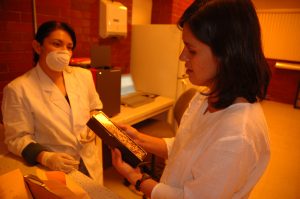 On the WE blog, we often discuss gender gaps in leadership positions and on corporate boards in the finance industry. Likewise, gender gaps also exist in science, technology, engineering, and math fields. Despite advances made over the past few decades, there’s still a large deficit in the number of women holding positions in these careers. Only up to one-third of these roles are held by women. Women in science, engineering, and technology (SET) careers earn about 33% more than their equal counterparts in non-SET jobs.
On the WE blog, we often discuss gender gaps in leadership positions and on corporate boards in the finance industry. Likewise, gender gaps also exist in science, technology, engineering, and math fields. Despite advances made over the past few decades, there’s still a large deficit in the number of women holding positions in these careers. Only up to one-third of these roles are held by women. Women in science, engineering, and technology (SET) careers earn about 33% more than their equal counterparts in non-SET jobs.
Women who are in these careers report a high degree of satisfaction: 80% of US women say they “love what they do” and 76% describe themselves as “very ambitious.” Women surveyed felt that an overwhelmingly male corporate culture in their respective fields was not conducive to advancement, and some felt that to be promoted, they had to actually be male.
The gender gap in SET jobs was also studied by Ming-Te Wang at University of Pittsburgh. The study found that more women were highly skilled in both math and English, yet a higher percentage of men than women in the study still wound up in SET careers. One conclusion is that when women are faced with career choices, they may veer away from SET careers because of the lifestyle implications. SET jobs may not work well for women who cycle in and out of their jobs to raise families. Another factor is almost a self-fulfilling issue: not enough female role models. There is increasingly more discussion around the idea of “sponsorship,” an advocate who actively lobbies for advancement within the ranks of management. Mentoring, on the other hand, is more of a passive activity through the giving of advice. Sponsorship in the SET careers has an additional level of complication that may make sponsorship more challenging: tight knit networks and again, male-dominated leadership.
Government programs such as “Educate to Innovate,” seek to increase the nation’s science and math achievements over the next decade. Ultimately, studies and government programs will fall short of these goals, unless individuals choose to step up and begin to eradicate the gender divide across all industries. As parents and teachers, we have the responsibility to encourage girls to explore science and technology in the classroom and at home through toys and activities.





